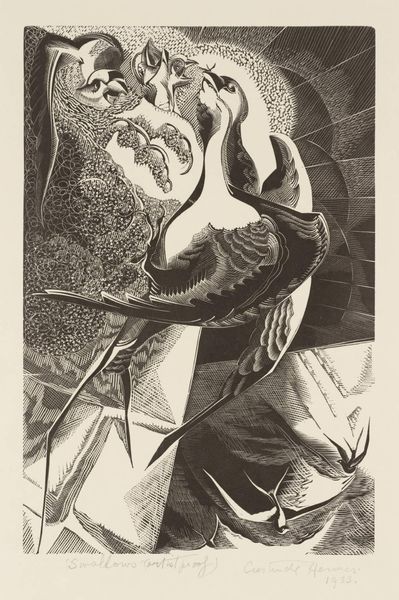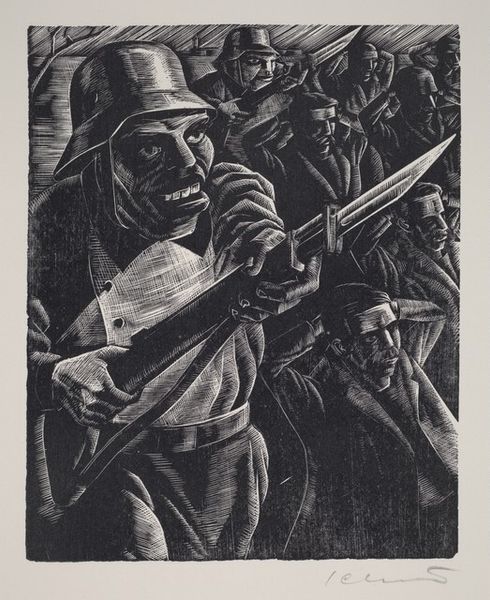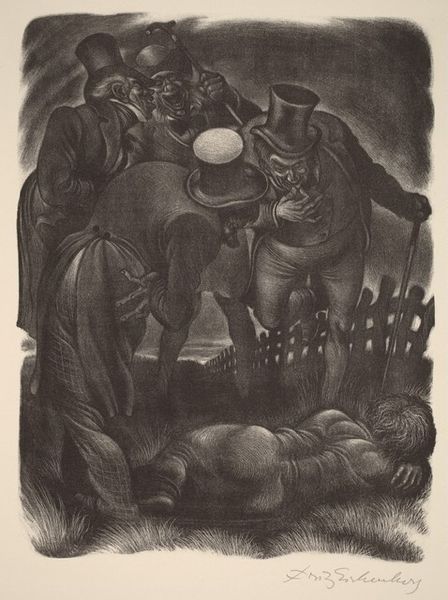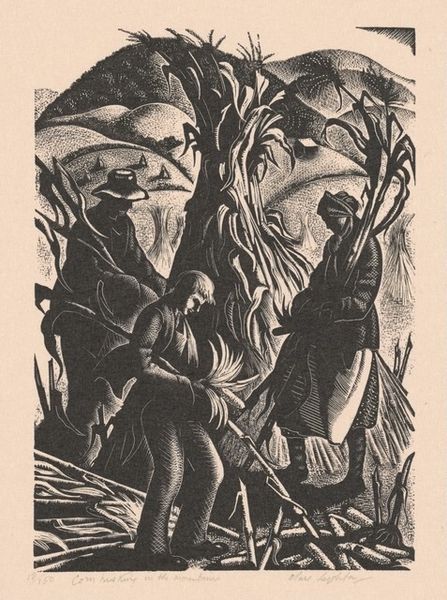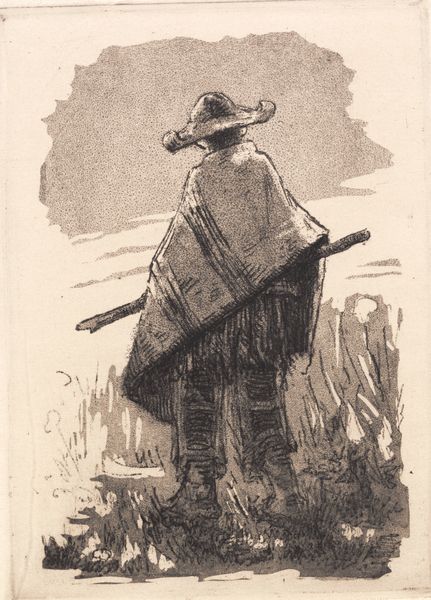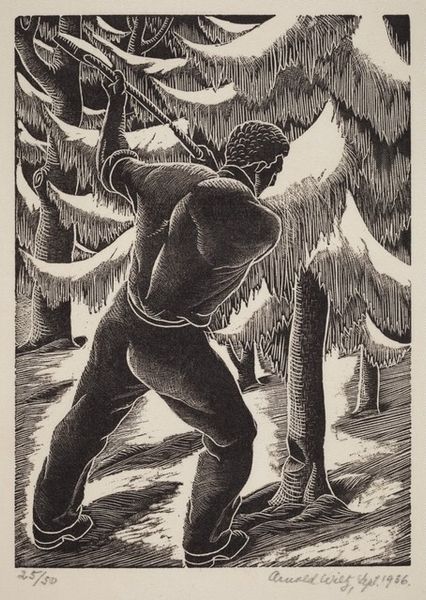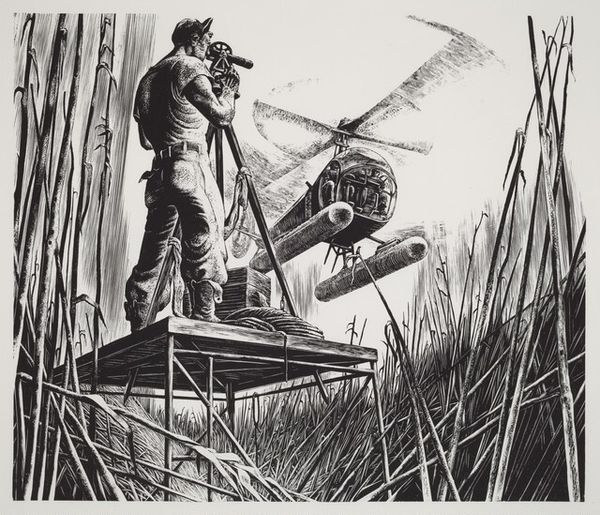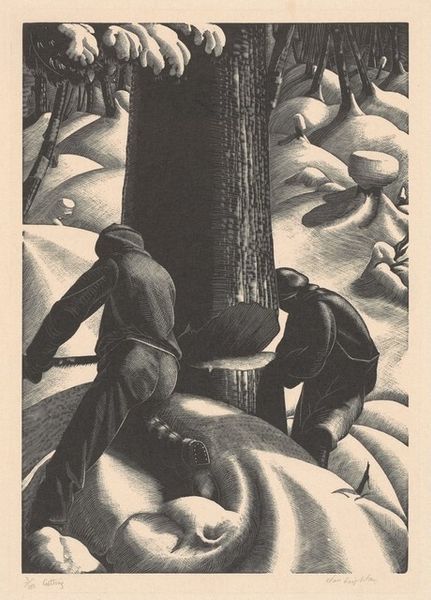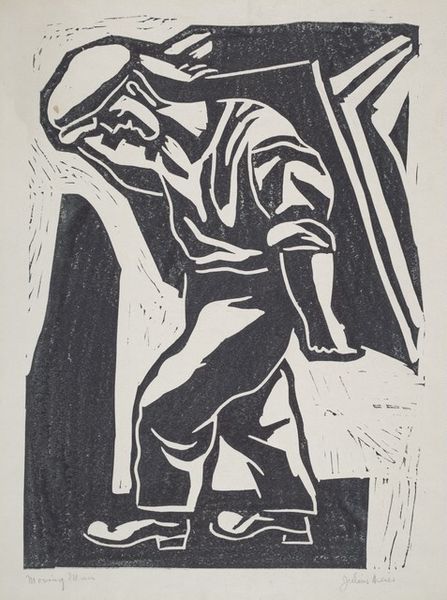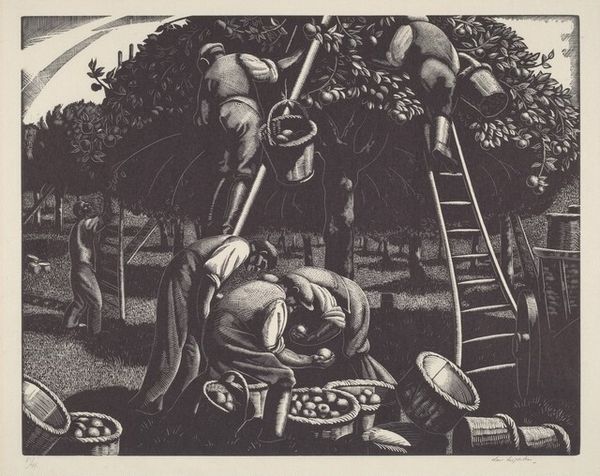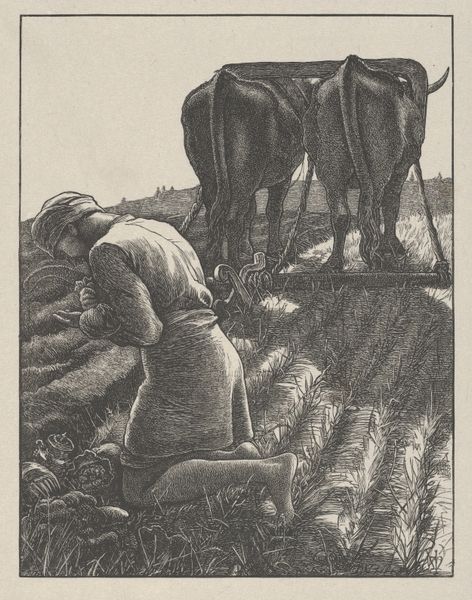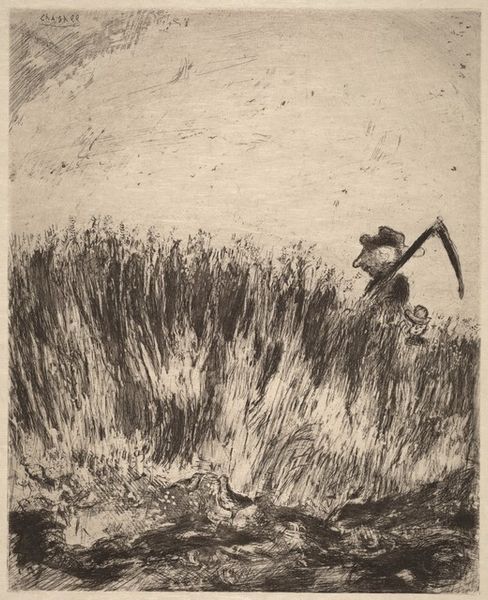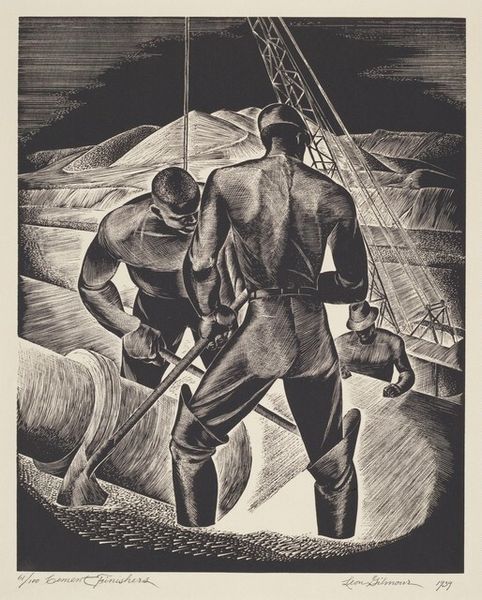
print, woodcut
# print
#
landscape
#
woodcut
#
modernism
#
realism
#
monochrome
Dimensions: image: 17.78 × 12.38 cm (7 × 4 7/8 in.)
Copyright: National Gallery of Art: CC0 1.0
Curator: Here we have Clare Leighton's 1935 woodcut, "Scything." The composition centers on a figure hard at work in the fields. Editor: It’s immediately striking – the strong diagonal of the scythe, the dense textures. There’s a somber quality to it, a heavy feel that suggests unrelenting labor. Curator: Leighton was deeply invested in depicting working-class lives, particularly in rural settings. It's important to understand this work within the larger context of the 1930s and the Depression era. The piece, realized in monochrome, evokes both realism and social commentary. How might this relate to intersectional narratives within gendered and political contexts? Editor: Absolutely. There’s a tension here. On one hand, it idealizes labor and rural life, recalling pastoral traditions. Yet, the sheer exertion visible in the figure undermines any romantic notions. We’re reminded of the physicality, the demand placed on the worker. Think of how societal structures put demands on such an occupation. The choice to portray this person specifically during a moment in time when politics of labor are brought into question evokes more questions than answers, specifically relating to their personhood as being reduced down to labor value. Curator: I think that understanding it as a "realist" work allows viewers a unique understanding of those who would otherwise be glossed over. Leighton’s prints were deliberately made accessible to a wide public audience, beyond traditional gallery settings. The reproduction, itself, takes the work beyond traditionally elitist spaces and into a broader market that could connect with the depiction in a way traditionally “fine” art would not allow. Editor: Indeed. The very nature of woodcut—its accessibility and its ability to be reproduced widely—connects with the subject matter. It democratizes both the image and the artistic process. It moves artwork from strictly appealing to the upper echelons to engaging those who otherwise would be separated from it due to systemic conditions that would exclude them. Curator: Looking at the interplay of light and shadow, one also cannot help but appreciate the textures rendered by Leighton. She very powerfully emphasizes both form and tone through the careful selection of specific lines and hatching that allow this image to evoke an intense emotive impact. Editor: Ultimately, this image asks us to confront the realities of labor, consider its value, and reflect on the dignity and the relentless physicality of working the land.
Comments
No comments
Be the first to comment and join the conversation on the ultimate creative platform.
